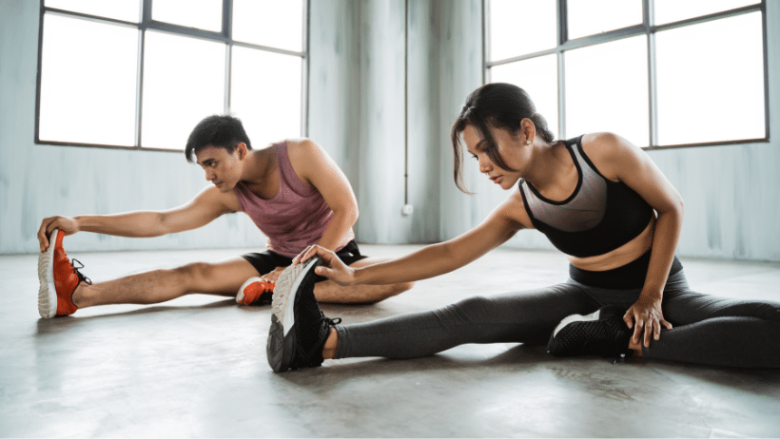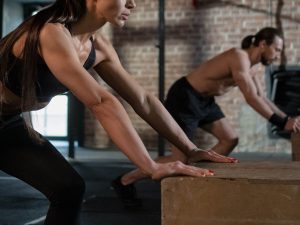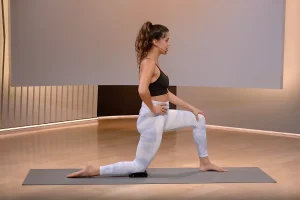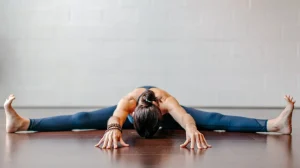Flexibility is an important but often overlooked aspect of sports. Good flexibility allows for free movement, reduces the risk of injury, and improves balance. Flexible muscles and joints also improve balance and rhythm, making daily activities easier and more comfortable. Incorporating stretching exercises into your daily workout helps relieve muscle tension, prevent joint stiffness, and maintain musculoskeletal health. For beginners, learning proper stretching techniques is crucial, as your body lays a solid foundation for maintaining good flexibility in the long term.
Start with the Basics
If you’re new to stretching, it’s best to start with simple, gentle movements. Basic stretches work important muscle groups such as the shoulders, neck, back, legs, and arms. Slow, gentle movements promote blood circulation in the muscles and prepare them for more intense workouts. Beginners: Hold each stretch for at least 15 to 30 seconds while maintaining steady breathing. Avoid jumping or forcing your body into awkward positions to reduce the risk of injury and maximise the stretching effect.
Dynamic Stretching vs. Static Stretching
Stretching is divided into two types: dynamic stretching and static stretching. Each type of stretching has its own benefits. Dynamic stretching is a beneficial warm-up for exercise because it gently guides muscles and joints through their full range of motion by controlling the movement. Examples of dynamic stretching include leg swings, arm circles, and torso rotations. Static stretching involves holding a stretch in a fixed position for a set period of time. This helps improve long-term flexibility and relaxes tense muscles. By incorporating both types of stretching into your daily workout, you prepare your muscles for exercise and improve overall flexibility.
Improving Joint and Muscle Health
Regular stretching can improve muscle flexibility and joint mobility, which is essential for an active lifestyle. Supple muscles are less susceptible to injury, and freely moving joints allow for better movement patterns. Stretching can also improve your posture by relaxing tense muscles and balancing muscle groups that have become stiff from prolonged sitting or repetitive movements. Beginners should focus on key body parts from the start, which helps maintain flexibility and reduces the risk of pain or injury from muscle imbalances.
Develop a Regular Stretching Habit
To truly improve your flexibility, you need to be consistent. Beginners should try to stretch daily, ideally after waking up, before exercising, or at the end of the day to relax. Even short stretches of 10 to 15 minutes at a time can be beneficial if you maintain them. Developing a daily stretching habit not only improves your flexibility but also helps you relax, relieve stress, and improve your overall health. Over time, regular stretching will make your activities easier, your daily routine more comfortable, and reduce the risk of injury.
Stretching Relieves Stress and Calms the Mind
Stretching is not only good for the body but also helps you relax and manage stress. Gentle stretches can activate the parasympathetic nervous system, which calms the mind and relaxes the body. This technique is especially helpful for beginners, especially those who are stressed by work, study, or other daily tasks. Conscious breathing while stretching can promote relaxation, release tension, and clear the mind. Stretching is not only a physical activity but also beneficial for mental health.
Use Simple Tools to Enhance the Effects of Stretching
Stretching is simple and easy to do, requiring no special equipment. Simple tools like yoga mats, yoga straps, or foam rollers can enhance workouts and help you work your muscles more effectively. Yoga mats make the floor a comfortable place to stretch, while yoga straps help beginners gradually increase their range of motion without strain. Using a foam roller promotes self-expansion of the myofascial muscles, which relaxes tense muscles and promotes blood circulation. Regular stretching is easier to maintain, at home or on the go, if you don’t need many accessories.
Progressing Safely in Flexibility Training
As flexibility improves, beginners can gradually increase the range and intensity of their stretching exercises. To avoid injury or overstretching, practising safely is crucial. Pay attention to how your body feels and avoid pain. Stretching should feel slightly unfamiliar but never painful. Introducing new stretches for different muscle groups, increasing the duration of the stretch, and practising controlled movements are all effective ways to improve flexibility and maintain physical fitness. It’s best to progress gradually so your body can easily adapt.
Focus on Progress and Stay Motivated
Beginners can stay motivated and consistent with their stretching exercises by tracking their progress. Seeing an increase in range of motion, ease of movement, and a decrease in muscle tension is rewarding. Setting achievable goals, such as touching your toes or improving shoulder mobility, can give direction and meaning to your workout. You can also increase workout variety and maintain interest by watching guided stretching videos online or in apps. As long as you consistently monitor your progress, flexibility training can maintain its effectiveness and satisfaction in the long run.
Conclusion
For beginners, stretching is an important part of maintaining optimal health. Stretching improves flexibility, increases joint mobility, and promotes relaxation, helping you achieve a healthier, more active lifestyle. Long-term benefits depend on consistency, using the right methods, and gradual progression. Stretching can be done at home with minimal equipment or as part of a more comprehensive fitness plan. It can help prevent injuries, reduce stress, and improve your overall quality of life. For beginners, regular and mindful stretching can improve muscle and joint strength, flexibility, and elasticity.
FAQs
1. How often should beginners stretch to progress?
For best results, beginners should stretch daily or at least three to five times a week.
2. How long should each stretch be held?
It’s best to hold each stretch for 15 to 30 seconds, focusing on slow, steady breathing.
3. Does stretching hurt?
You should feel some discomfort while stretching, but it shouldn’t be painful. Don’t force your body into specific positions.
4. Do I need special equipment to stretch at home?
No, most stretching exercises don’t require any equipment. However, yoga mats, straps, or yoga blocks can enhance the stretching effect.
5. Can exercise relieve stress?
In fact, stretching can relax the body, reducing muscle tension and making you feel calmer.
6. Can I stretch and do other exercises at the same time?
Absolutely. You can stretch before and after exercise to warm up or recover your muscles. Stretching can also be done simultaneously with other exercises.




